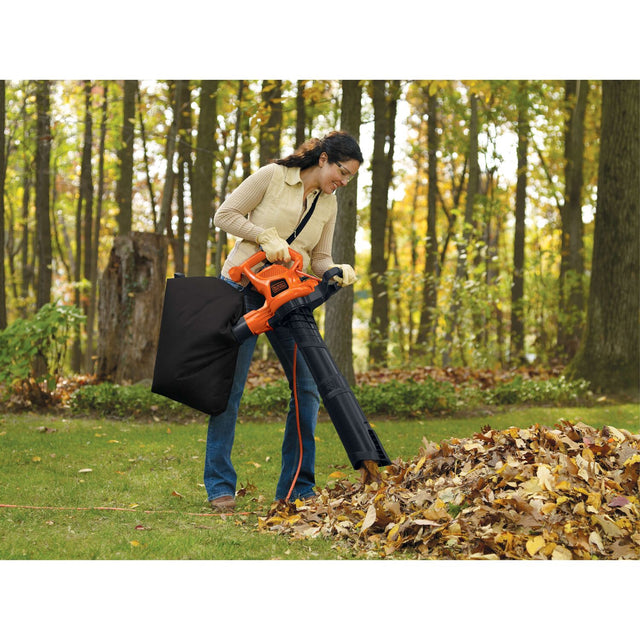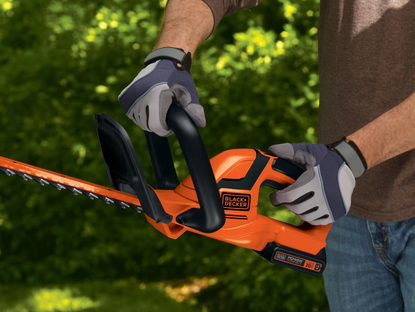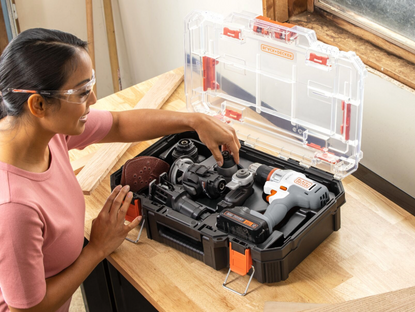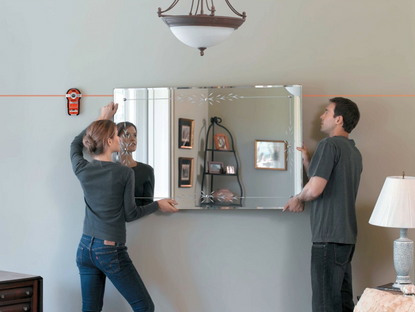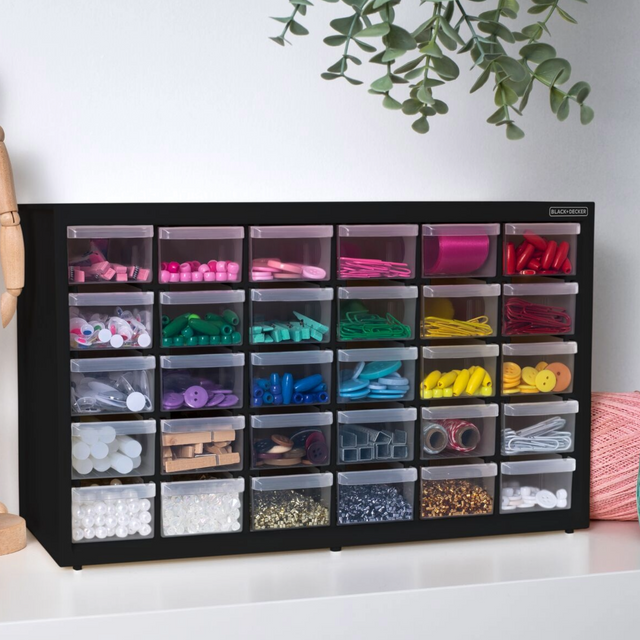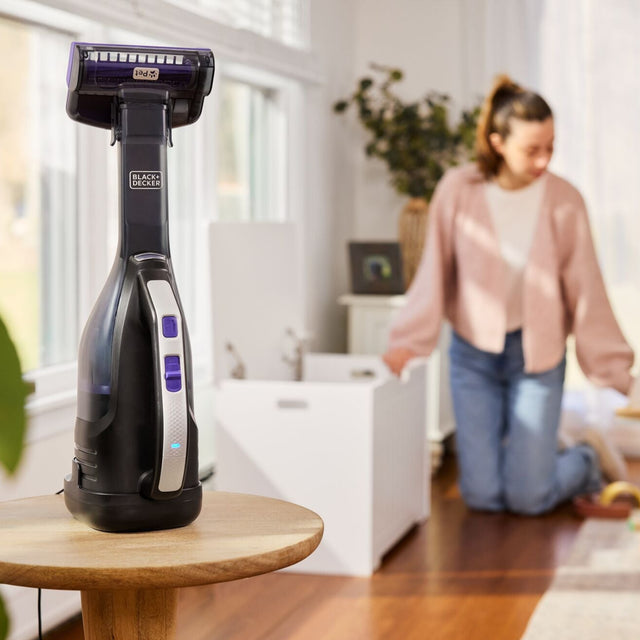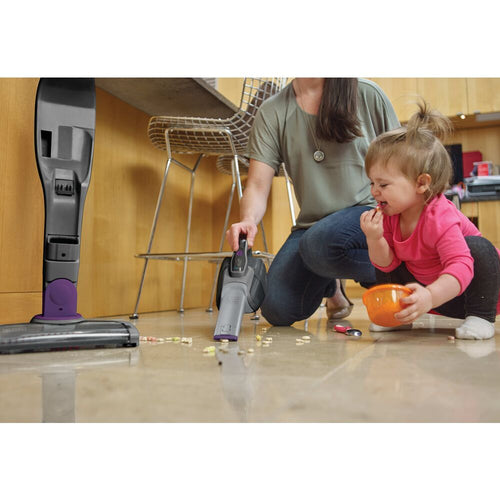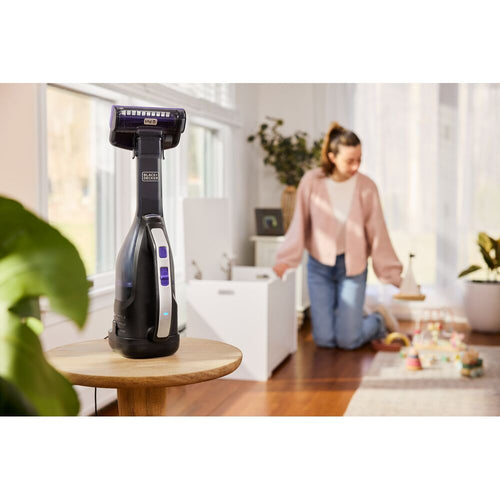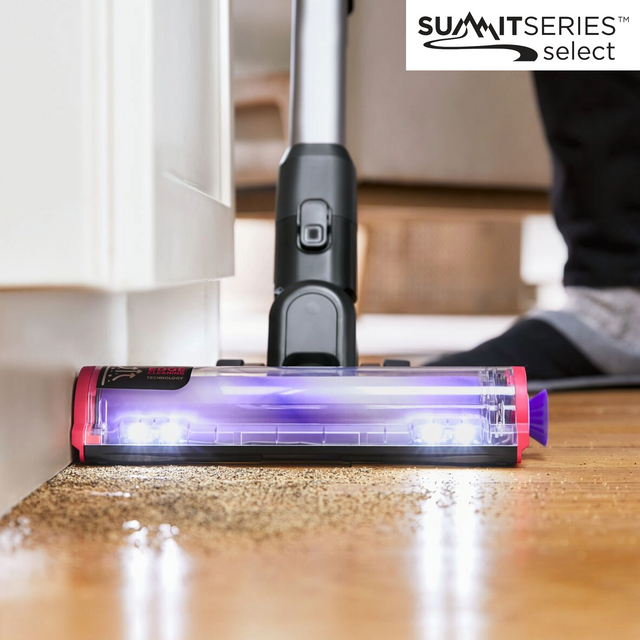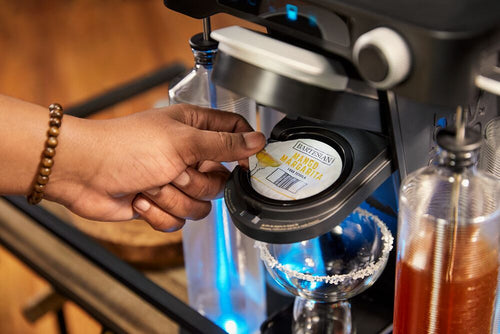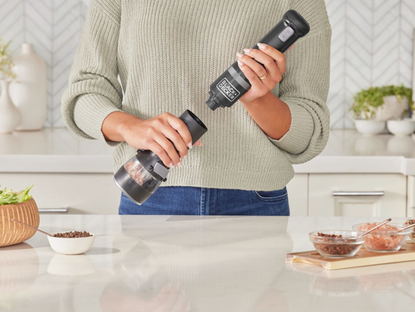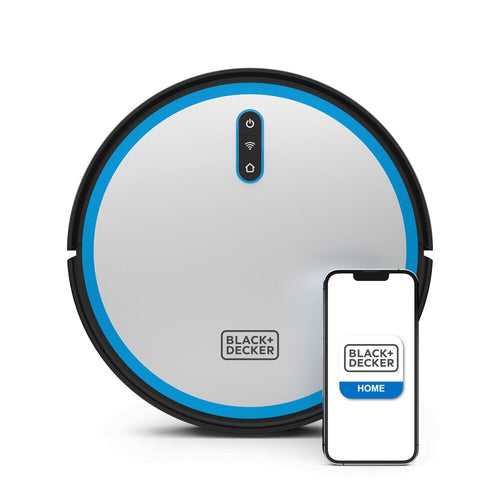Roboseries Robot Vacuum with Mapping Technology
BDRV1








-
Using Gyroscope Sensors, Robot Maps out the environment, navigates around furniture and follows a sophisticated cleaning path. It has the capability to clean multiple types of surfaces and is perfect for hard floors and carpet. It has multi-stage filtration with HEPA to prevent dust from escaping the robot during cleaning.
- WiFi / App enabled unsing the Black & Decker Home App
- Control via the App or included Remote Control
- Multiple Cleaning Modes including Scheduling
- Row by Row Cleaning for Maximum Coverage
- Multi Surface Cleaning: Carpet & Hard Flooring
- 2 Hour Run-Time
- 2000 PA Suction
- 560ML Dustbin Capacity
-
Cordless Vs Corded:
CordlessHeight:
3.0 INLength:
8.0 INWeight:
4.0 LBWidth:
8.0 INBest For:
Dirt / DebrisRun Time:
120 minDustbin Capacity:
560 mlWarranty:
1 Year Limited WarrantyIncludes:
(1) Charging Dock. (1) Charging Adapter. (1) Side Brush. (1) Remote Control
Manufactured by Silverpoint Innovations
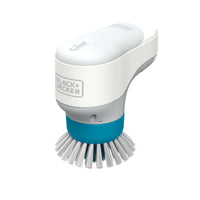
Related products
Product Q&A
Submit a New Question-
- When considering the features of a robotic vacuum, several factors are important to consider. Here are some key features to look for:
- 1. Navigation and Mapping: A good robotic vacuum should have advanced navigation capabilities to efficiently clean your home. Mapping features allow the vacuum to create a virtual map of your space, enabling it to clean in a systematic and organized manner.
- 2. Cleaning Performance: Look for a robotic vacuum with strong suction power and effective brush systems. This ensures that it can pick up dirt, dust, and debris from various surfaces, including carpets, hardwood floors, and tiles.
- 3. Battery Life and Charging: Longer battery life is desirable, as it allows the vacuum to clean for a longer duration before needing to recharge. Additionally, consider how the vacuum docks and charges itself. Ideally, it should automatically return to its charging station when the battery is low.
- 4. Smart Connectivity: Many robotic vacuums can be controlled through smartphone apps or voice assistants like Amazon Alexa or Google Assistant. This allows you to schedule cleanings, monitor progress, and control the vacuum remotely.
- 5. Virtual Barriers and No-Go Zones: Some robotic vacuums come with virtual barriers or magnetic strips that allow you to create boundaries or restrict access to certain areas. This is useful for preventing the vacuum from entering specific rooms or areas with delicate objects.
- 6. Dirt Detection and Auto-Adjustment: Look for a vacuum that can detect areas with higher levels of dirt or debris and automatically adjust its cleaning mode or suction power accordingly. This ensures a more thorough cleaning experience.
- 7. Maintenance and Filtration: Consider the ease of maintenance, such as emptying the dustbin and cleaning the filters. HEPA filters are desirable as they trap allergens and improve air quality.
- 8. Noise Level: Robotic vacuums can vary in noise levels. If you prefer a quieter cleaning experience, look for models that specifically mention low noise operation.
- 9. Compatibility with Smart Home Systems: If you have a smart home setup, check if the robotic vacuum is compatible with your existing smart devices and systems for seamless integration.
- 10. Price and Warranty: Finally, consider the price range and warranty offered by different brands. Compare the features and performance against the price to ensure you're getting the best value for your money.
-
- While robotic vacuums offer convenience and efficiency, there are a few downsides to consider:
- 1. Limited Cleaning Power: Robotic vacuums generally have less suction power compared to traditional upright or canister vacuums. While they can effectively clean light to moderate dirt and debris, they may struggle with heavy or deeply embedded dirt.
- 2. Inability to Handle Stairs: Robotic vacuums are not designed to navigate stairs. They can fall off edges, potentially causing damage to the vacuum or your property. Stairs and elevated surfaces need to be blocked off or secured to prevent accidents.
- 3. Lack of Manual Precision: Robotic vacuums rely on pre-programmed algorithms and sensors to navigate and clean. While they can map and clean most areas, they may struggle with tight corners, intricate furniture arrangements, or hard-to-reach spots that require manual intervention.
- 4. Maintenance and Upkeep: Robotic vacuums require regular maintenance, such as emptying the dustbin, cleaning brushes, and replacing filters. Neglecting maintenance can impact performance and longevity.
- 5. Potential for Getting Stuck: Despite advanced navigation systems, robotic vacuums can still get stuck on obstacles like cords, rugs with tassels, or uneven surfaces. This may require manual intervention to free the vacuum.
- 6. Limited Battery Life: While battery life has improved over the years, robotic vacuums still have limited run times. Depending on the model, they may need to return to their charging dock multiple times to complete a full cleaning cycle.
- 7. Higher Initial Cost: Robotic vacuums tend to be more expensive than traditional vacuums due to their advanced features and technology. The initial investment may be higher, especially for models with advanced mapping and smart connectivity.
- 8. Lack of Personalized Cleaning: Robotic vacuums clean based on pre-set algorithms and sensors, which may not cater to specific cleaning preferences or target areas. They may not be as effective in handling specific cleaning tasks or addressing individual cleaning needs.
- It's important to weigh these downsides against the convenience and time-saving benefits that robotic vacuums offer to determine if they are the right fit for your cleaning needs.
